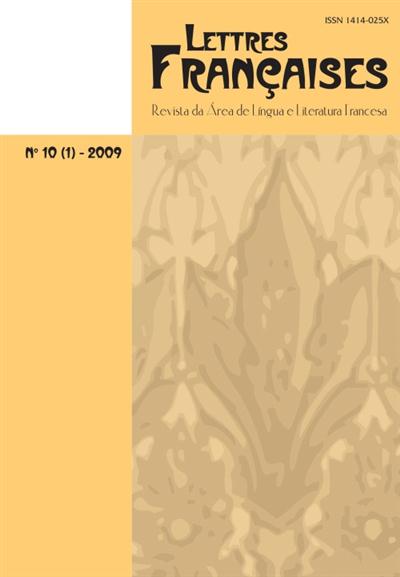O olhar durassiano
Palavras-chave:
Marguerite Duras, Olhar, Obsessão, Amor, Despossuir, Voyeur,Resumo
Este artigo trata do tema do “olhar” em quatro obras da Marguerite Duras: Dix heures et demie du soir en été (1960), Le Ravissement de Lol V. Stein (1964), Détruire dit-elle (1969) e Índia Song (1973). Primeiramente mostraremos a origem desta proposta tão recorrente nos livros durassianos chegando a se tornar uma obsessão e marcando as relações amorosas entre seus personagens. Nosso objetivo é entender o papel do observador e o do exibicionista. Para que exista um “voyeur” é preciso que haja alguém que se exponha e sinta prazer em fazê-lo. Para compreender a relação da autora com o olhar é preciso, primeiramente, conhecer o trauma de infância que tornou esse tema uma obsessão em sua obra. Em seguida mostraremos como esse assunto aparece nas obras citadas acima e quais são as conseqüências que decorrem do emprego repetido do tema. A questão do olhar traz aos romances durassianos uma nova forma de conceber o amor. Marguerite Duras subverte o esquema tradicional amoroso em que o casal pensa ter encontrado o amor eterno. Ao contrário, o amante durassiano não precisa ter a pessoa amada, poderá se contentar com o espetáculo assistido de um outro casal. Prefere ser voyeur a agente do amor. É inovador no que diz respeito à posse, aceita ser despossuído para poder gozar do encontro alheio. O papel da escritora, da diretora de cinema é semelhante ao do voyeur. Ela escreve e dirige aquilo que vê a fim de deliciar o leitor que entra em contato com sua obra. Palavras-chave: Marguerite Duras. Olhar. Obsessão. Amor. Despossuir. Voyeur.Downloads
Publicado
05/05/2010
Edição
Seção
Artigos
Licença
Os manuscritos aceitos e publicados são de propriedade da Revista Lettres Françaises. É vedada a submissão integral ou parcial do manuscrito a qualquer outro periódico. A responsabilidade do conteúdo dos artigos é exclusiva dos autores. É vedada a tradução para outro idioma sem a autorização escrita do Editor ouvida a Comissão Editorial.

